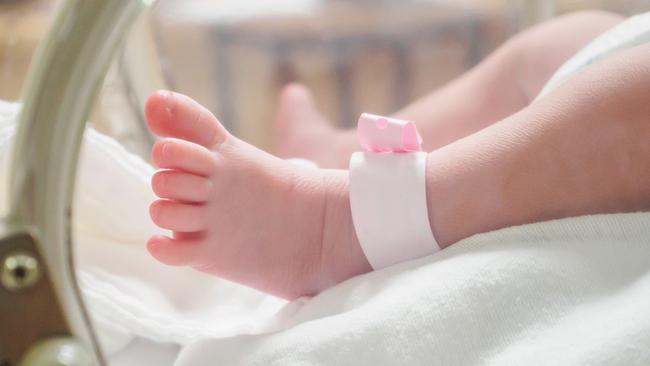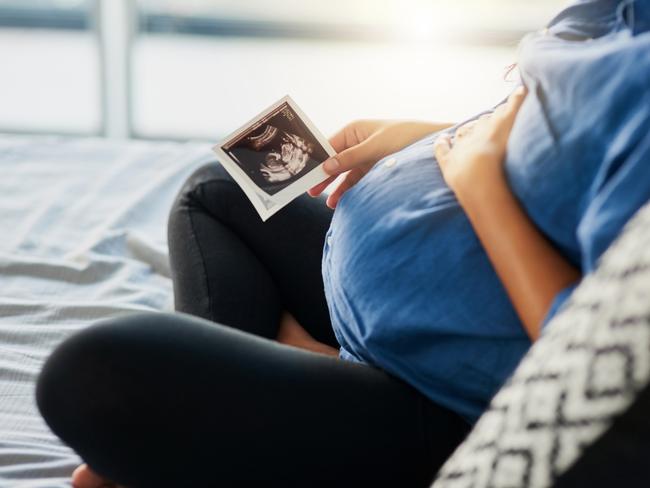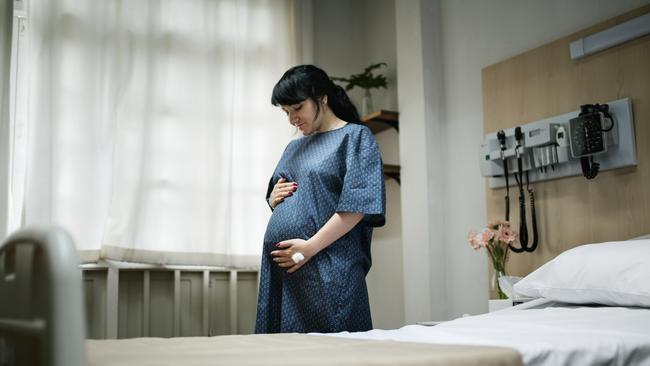Vikki Campion: Katie has a hospital down the road but no one can give birth there
Katie faced a six-hour drive to hospital to give birth but her baby was stillborn before she could get there. Outside our cities, where rural birth services are scant, understaffed, and overstretched, it’s a sadly common tale, writes Vikki Campion.

Opinion
Don't miss out on the headlines from Opinion. Followed categories will be added to My News.
They are Tonys and Charlies. They are Isabelles and Pipers.
They are as much part of the family forever as any other child. They just never took that first breath.
Mothers everywhere have a fear of this disaster, but in regional areas, it’s vastly more pronounced.
In a city, an ambulance has you in a hospital in half an hour.
In the bush, a growing number of hospitals have zero capacity to birth a child — one of the most basic procedures an affluent Western society should be able to provide.
To tell people overseas there are parts of Australia you can’t have a baby, they would think you are referring to the Red Centre.
But this is in regional towns. Where 98 per cent of your food comes from. The same places that have high schools, art galleries, trendy boutiques and sophisticated restaurants.

Every year, the list of where women can give birth shrinks.
A year ago, Katie, a female farmer from Northern NSW, bundled her belly and babies into a car and drove six hours for a planned C-section in 10 days.
Piper was stillborn before she could get to her hospital.
On the anniversary of Piper’s death, Katie is pregnant again. She is getting ready for the logistical nightmare of birth, with a private obstetrician and two consultants.
If she were not deemed high risk, like every other regional woman in her area, she would get a different midwife for every appointment and be forced to explain Piper’s death to a new face every check-up.
With her private obstetrician, each teary scan ends with her doctor holding her hand and hugging her.
‘IT TOOK FOR MY BABY TO DIE BEFORE I GOT SUPPORT’
“It took for my baby to die before I got that support,” she said.
Between 32 and 35 weeks, she will move her other children six hours away to be near a high-risk clinic.
At 36 weeks, she is scheduled for a C-section, organising her sister to attend appointments, parents to look after children. Including transport, accommodation, diesel, and the birth itself, the bill she will wear — not the taxpayer — is well over $8000.
Katie has a hospital down the road but no one can give birth there. There’s no point calling an ambulance to take you to hospital because there’s no hospital that will take her.

The best hope is the paramedic knows how to deliver the baby. Many, here, do.
“Proximity is everything. If you are worried about foetal movement and your hospital is six hours away, you won’t do the drive, you will sit on it,” she said.
Saving money bypassing regional maternity units is like providing cost savings by ripping up the roads or burning down the schools to cut education bills.
Treasury has forecast Australia’s population increasing to 40 million, but rural birth units, maternity wards and regional hospitals are being starved billions of dollars as access to them for women who live outside cities shrinks.
How can you have an intergenerational report when you can’t explain where the next generation can be born?
If you are a male farmer bitten by a snake, they don’t leave you to wander the countryside looking for appropriate emergency care. They fly you out.
But if you are a female farmer having a baby, they make you leave town to find your own arrangements at your own expense.
RURAL MATERNITY WARDS CLOSE
More than 40 per cent of rural maternity wards closed between 1992 and 2011. Over the past decade, Queensland Labor has closed 37 maternity wards. In NSW, state-of-the-art birth suites are built and never staffed and “birth before arrival” rates are soaring.
The Albanese Government’s Intergenerational Report last week found major cities tend to have lower fertility rates while “regional areas have fertility rates much closer to the replacement rate.”
So what are our states doing? Shutting down the regional maternity wards.
If you want millions of future taxpayers, you must support Australian women birthing.
Otherwise, you are outsourcing motherhood out of our country and into other countries.
Next week, public hearings into birth trauma in NSW will hear how women, families and health workers are traumatised by underpaid and overstretched rural workforces.

NSW obstetrician and gynaecologist Maria del Pilar Luna Ramirez, the Head of Department in Lismore, submitted that specialists “have little motivation to work rural”, “are extremely scarce and at the mercy of having locum specialist that comes for days at a time and has no involvement or interest in making the service grow”.
Understaffing makes continuity of care impossible. Clinics are overbooked.
Where you can give birth is shrinking back to major cities, which means we have to pay more to have our baby, with flights, fuel, accommodation and childcare before we even get the bill for the obstetrician.
In May, a senate inquiry found rural and remote women have higher rates of unplanned pregnancies, infant mortalities, low birth weights and preterm babies, which get worse the further they are from a city.
That committee recommended birthing services in non-metropolitan public hospitals must be available for all pregnant women.
AND THE SHUTDOWNS CONTINUE
Since then, more wards have shut down. Burnie, in Geelong, Biloela.
A few days ago, Ingham closed its maternity ward, forcing women to travel more than 100km to Townsville Hospital.
A week ago, Cairns Private announced closing its maternity unit because of staff shortages.
Once they go, they rarely, if ever, reopen. Parkes birthing unit has been shut since 2019 despite recruitment campaigns.
So many other things get such high colour in the capitals, so why is it that when you are looking to cut costs, rural maternity is the first thing to go?
Electorates with the highest Indigenous populations in Australia have the least access to maternity care.
But if you believe in giving Aboriginal babies a better start, apparently, what they need is more bureaucrats in Canberra.
Imagine a fraction of the $2.7 billion you gave to Alan Joyce’s Qantas going to rural medical professionals?
Or the trillions of dollars to reach a NetZero target?
Stillbirth claims more children’s lives in regional areas than our national road toll, yet where is the advertising campaign for them?
A child born at full term is not anonymous. Their mothers still lactated and had no mouth to feed.
Their dad still kissed their forehead.
If we prioritised the safety of babies in regional areas, Piper would not be in a pram, not a grave.





